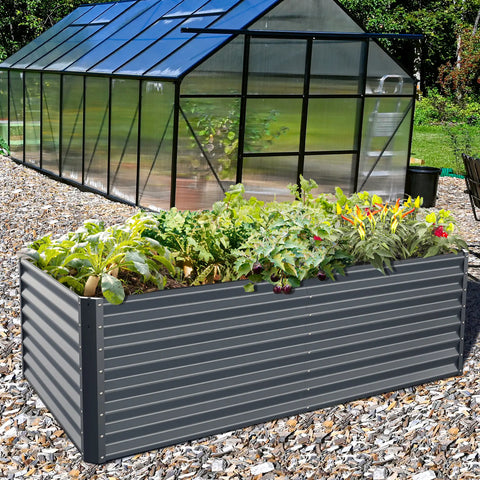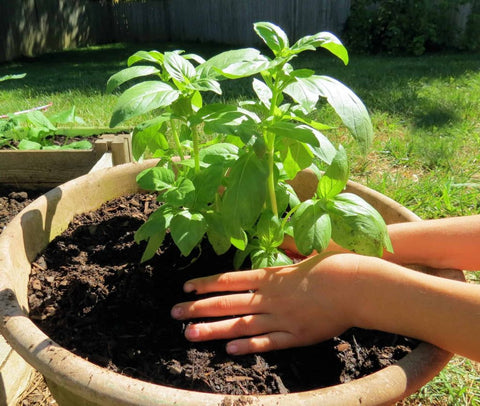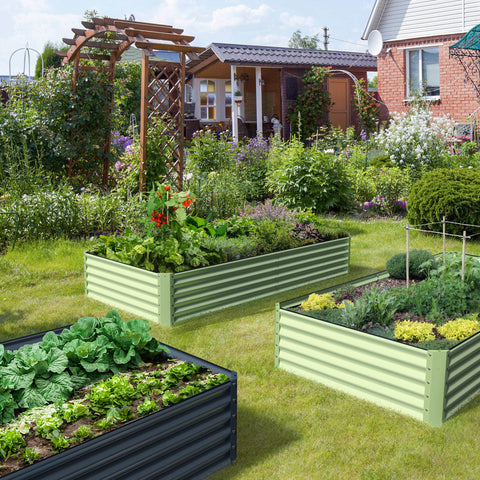In the ever-evolving world of gardening, where new plant varieties and hybrids frequently take center stage, there's a special place for the timeless elegance and historical significance of heirloom plants. These living legacies, passed down through generations, not only bring a touch of nostalgia but also contribute to biodiversity and sustainable gardening practices. In this detailed blog, we'll delve into the enchanting realm of heirloom plants and explore their rightful place in your raised garden beds.

Unveiling the Beauty of Heirloom Plants
Heirloom plants are varieties that have been passed down through multiple generations, often defined by their open-pollination nature, historical significance, and distinct characteristics. These plants carry stories of the past, linking us to the gardening practices of our ancestors.
The Allure of Heirloom Varieties
- Historical Significance: Heirloom plants are living connections to our gardening heritage. Each variety has a story, whether it's a treasured family heirloom or a cultivar with roots tracing back to a specific region or community.
- Biodiversity Conservation: Embracing heirloom plants contributes to the preservation of biodiversity. Many modern hybrids prioritize uniformity and mass production, leading to a reduction in genetic diversity. Heirlooms, on the other hand, showcase a wide range of characteristics, helping maintain a rich genetic pool.
Choosing Heirlooms for Your Raised Garden Beds
- Flavorful Edibles: Heirloom vegetables are renowned for their exceptional flavors and unique traits. Consider classics like Brandywine tomatoes, Moon and Stars watermelons, or the vibrant hues of heirloom carrots for a culinary adventure in your garden.
- Enchanting Flowers: Heirloom flowers bring a touch of vintage charm to your garden. Old-fashioned roses, hollyhocks, and sweet peas evoke a sense of nostalgia, infusing your outdoor space with timeless beauty.

The Advantages of Heirloom Plants in Raised Garden Beds
- Adaptability: Heirloom plants often exhibit resilience and adaptability to local conditions. Over generations, these plants have acclimated to specific climates and soil types, making them well-suited for your garden environment.
- Sustainability: By cultivating heirloom plants, you actively participate in sustainable gardening practices. The reliance on open-pollination methods means these plants naturally adapt and evolve, reducing the need for external inputs like synthetic fertilizers and pesticides.
Tips for Growing Heirlooms in Raised Beds
- Soil Preparation
- Nutrient-Rich Mix: Create a fertile environment by incorporating well-composted organic matter into your raised beds. Heirlooms thrive in soil that promotes microbial activity and provides a balanced nutrient profile.
- Companion Planting
- Enhanced Growth: Leverage the benefits of companion planting to optimize the growth of your heirloom plants. Pairing compatible species can deter pests, improve pollination, and maximize space utilization.
- Adequate Spacing
- Room to Flourish: Heirlooms often have distinct growth habits and sizes. Ensure proper spacing between plants to allow for optimal air circulation, reducing the risk of diseases and promoting overall plant health.
- Seed Saving
- Preserve Legacy: One of the unique aspects of heirloom gardening is the practice of saving seeds. As your heirloom plants mature, consider saving seeds from the healthiest specimens. This not only sustains the legacy of these plants but also empowers you as a steward of genetic diversity.

The Joy of Saving Seeds
One hallmark of heirloom gardening is the practice of saving seeds. As your heirloom plants mature, consider saving seeds from the healthiest and most vibrant specimens. This age-old tradition not only sustains the legacy of these plants but also empowers you to become a steward of genetic diversity.
Embracing the Timeless Beauty
Heirloom plants are not just additions to your garden; they are living tributes to the beauty of the past. Their vibrant colors, unique shapes, and rich histories create a tapestry of diversity that enriches the landscape and our connection to the earth. As you cultivate heirloom varieties in your raised garden beds, you're not just growing plants; you're nurturing a living legacy that transcends time and continues to flourish with each passing season.
In conclusion, integrating heirloom plants into your raised garden beds is not just a horticultural choice; it's a celebration of heritage, flavor, and the enduring beauty of nature. Whether you're captivated by the stories behind these plants or simply drawn to their exceptional qualities, the presence of heirloom varieties transforms your garden into a sanctuary of history and biodiversity. As you embark on this journey, savor the magic of growing plants with roots deeply intertwined with the past, creating a garden that is truly timeless.









